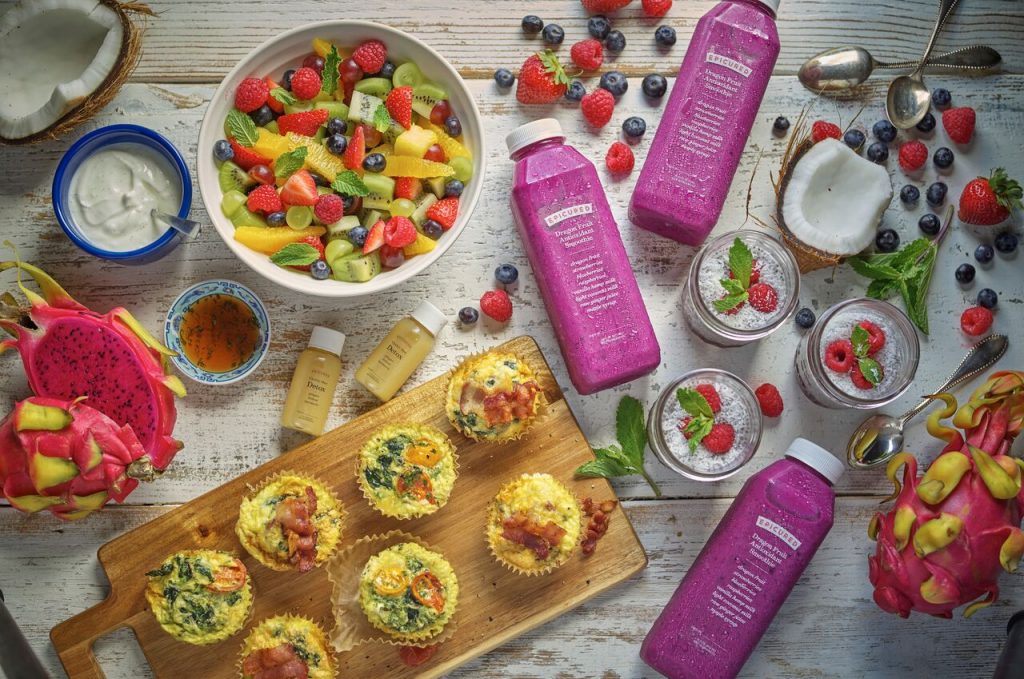Irritable bowel syndrome (IBS) is a chronic gastrointestinal condition that causes symptoms like abdominal pain, bloating, gas, diarrhea, and/or constipation. IBS symptoms are often brought on after eating, leaving many IBS patients unsure of what is safe. If IBS is a new diagnosis for you (or you’re in a cycle of flare-ups), then it may feel like even healthy eating causes symptoms!
With so many things to avoid, it can feel like there is NOTHING to eat when you have irritable bowel syndrome. While there is not a one-size-fits-all approach to IBS, many people have found relief with a low FODMAP diet, which is low in fermentable carbohydrates. You’ve probably seen a number of lists of what you can and can’t have (check out ours right here!), but what’s an IBS sufferer to do when they just want a quick meal? Read on for 5 tips that you can incorporate into your IBS diet today, whether or not you’ve started a low FODMAP diet.
To avoid irritants and optimize gut health, consider:
1.) Fiber
This is a type of carbohydrate found in plant foods that are not digested. It’s an extremely important part of your digestive health that can ward off constipation and most people, including IBS patients, do not get enough. The recommendation for most people is to get 25-35 grams of fiber per day. While some fibers are fermentable, making IBS symptoms like bloating and gas worse, there are many high-fiber foods that you can eat to get all those gut health benefits. Try including foods like oats, carrots, potatoes, gluten-free bread and rolls, and chia seeds.
2.) Fermented Foods
Stick to smaller portions of things like yogurt without lactose and kefir, tempeh, and miso. Fermented foods may help increase the number of beneficial bacteria in your gut, which is important for digestion. If you’re not used to eating fermented foods, start with a small portion. Top your morning oatmeal with a tablespoon of yogurt or make a salad dressing with miso paste.
3.) Herbs & Spices
Garlic and onion are often irritants for people with IBS symptoms. Unfortunately, although garlic and onion are both amazing prebiotics for your gut (i.e. food for your gut bacteria), they also happen to be high FODMAP foods. So, if you’re still in the process of figuring out what your triggers are, pay attention to how much garlic and onion you’re using in your cooking. One great way to add some flavor to your meals without garlic and onion is to add in more herbs and spices. The American Gut Project is a study that showed that people who consumed 30 plants per week had more diversity in their gut bacteria. Herbs and spices are included in your total 30, so start diversifying your seasonings!
4.) Portion-size
Coffee and tea are both considered low FODMAP but they’re often big gastric irritants for irritable bowel syndrome sufferers. Try limiting to just one cup or swapping out for something like peppermint tea. You can also try substituting your milk or sweetener. If you use regular cow’s milk, try cow’s milk without lactose or almond milk. Limit the honey in your tea to 1tsp or instead of artificial sweeteners which may contain sorbitol, try regular table sugar. Stevia is also a low FODMAP sugar-free option that won’t cause bloating and other symptoms.
5.) Consistency is Key
Eat regular meals and snacks if you’re hungry. Ideally, you want to give yourself a few hours in between meals and snacks to prevent FODMAP stacking due to portion size limitations, but you also don’t want to go hungry! Getting enough nourishment is always the end goal.
What are some good options?
So how can you incorporate these tips into a gut-friendly day of eating? Try some of these meals and snack ideas!
- Breakfast:
- Try lactose-free yogurt with raspberries and hemp seed hearts. Added boost: chopped mint!
- Try oatmeal made with chia seeds, almond milk, and topped with blueberries. Or try Epicured’s Country Cinnamon Oatmeal with Maple Glazed Pecans.
- Lunch:
- Salad/Bowl: Epicured’s Buddha Bowl is a great option.
- Snacks
- Granola or Protein Bars: Try Almond & Cranberry Energy Bites or GoMacro bars.
- Veggies and dip: Try Fun Without FODMAPs Red Pepper and Walnut Dip with carrots and cucumbers.
- Dinner:
- Keep it simple! A protein, veggie, and starch will round out your meal. For example, try salmon with lemon and dill, roasted potatoes, and carrots. Or, Epicured’s Sesame Crusted Wild Salmon is a delicious option!


